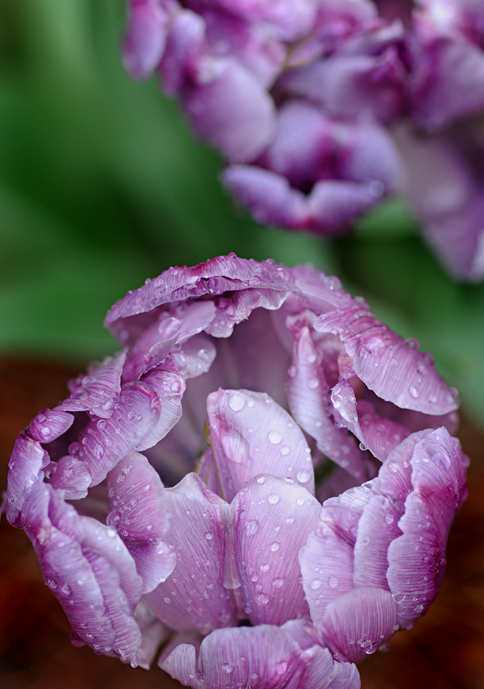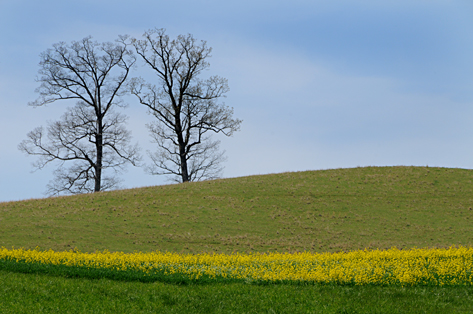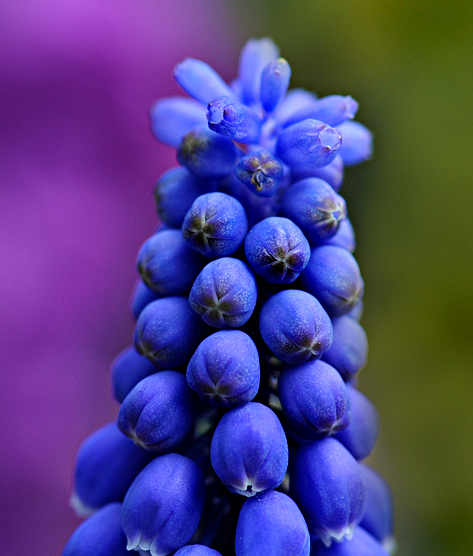 On April 21, Sue, her Aunt Gay and I attended a lecture and luncheon honoring outdoor living expert and gardener P. Allen Smith at the Arkansas Governor’s Mansion. The event was hosted by The Friends of the Mansion. He was also selling and autographing his newest book, Bringing the Garden Indoors (which, of course, I had to have!). Check out his website here—it’s nicely designed and very informative. Click here to find a plethora of short gardening videos featuring Smith on youtube.com.
On April 21, Sue, her Aunt Gay and I attended a lecture and luncheon honoring outdoor living expert and gardener P. Allen Smith at the Arkansas Governor’s Mansion. The event was hosted by The Friends of the Mansion. He was also selling and autographing his newest book, Bringing the Garden Indoors (which, of course, I had to have!). Check out his website here—it’s nicely designed and very informative. Click here to find a plethora of short gardening videos featuring Smith on youtube.com.
Smith’s lecture started at 10:30, followed by an outdoor luncheon and leisurely tour of the gardens, which he designed. He has worked on the gardens for the past 25 years. Allen is a very engaging speaker and quite funny. We really enjoyed the presentation and although we didn’t win any of the “guess the plant and win a plant” prizes, we still had a great time.
SUE’S FERVENT MISSION
Years ago I told Sue that I thought Arkansas was the most dreadful state in the U.S. She has been determined to prove me wrong ever since. My opinion was not unfounded. Almost every time Michael and I made the road trip from here to visit my family in Texas, we took the “shortcut” (as if a 1,600 mile one way trip can even be associated with the word “short”) through the Little Rock area, and we never really had a pleasant experience. All I saw was flat, flat, FLAT earth. Grassy fields. Wire fences with Red-tailed Hawks perched on every other post (yes, I even counted them to pass the painful time away). Red-tailed Hawks swooping in to terrorize tiny field mice. Heat. Lots of it. Even in November.
One year we decided at the last minute to surprise my parents and drive down for the holidays. We found ourselves with a week off during Christmas and hadn’t planned to do anything. I called my younger sister, who was staying with parents at the time, and told her about our plans. The last thing she said was, “you’re going to hit those predicted ice storms in Arkansas!” I dismissed her warning and we packed up the car and left that same night. Yes, in the night (young and foolish, we were). We were vagabonds. Gypsies. The blue highways were calling. Ice storm, smice storm. The next evening, we were on the outskirts of Little Rock. It was night—very cold and very dark. Michael was asleep; I was on driving duty. It was if the pavement went from bone dry to black ice with a line you could actually see. I went from 65 mph to barely 3 mph in seconds. There were freight trucks jack-knifed in the ditches on either side of us. I punched Michael awake and hollered, “if we’re going to die in this, you’re going to be awake for it!” Even with my foot off the gas pedal, we were still sliding forward. There was nothing to do but slide toward the nearest exit and find a hotel. What we hadn’t bargained for was that everyone else had the same idea. There was no room at the inn for Mary and Joseph. I suggested we pull over and sleep in the car. Michael nixed that idea, stating we would surely die from exposure. (He hails from Ohio; I’m a South Texas native—just imagine who knows more about cold weather).
The last hotel we went to directed us to the temporary Red Cross Shelter at a local Baptist church. After a restless night on a hard church pew, followed by cold grits (with no salt or butter in sight—hello?) and even colder biscuits (yum!), Michael and I looked at each other and silently agreed—we were leaving even if we had to skate to San Antonio. As we headed out the door, we were pummeled with, “you shouldn’t leave….it will be 3-4 days before it’s safe to leave!” Spending three more nights sleeping on a hard church pew was more than we could bear (Yes, we were grateful for the refuge, but driving 17 hours straight had rendered us both a tad grumpy). Michael and I linked arms and elbows and glided (sounds graceful, doesn’t it? Trust me, it wasn’t) our way to our car in the church parking lot. We looked over our shoulders at the group of ice storm refugees just shaking their heads in disbelief. We didn’t care if we had to drive 3 mph the entire 11 hour journey to Texas. We drove through a residential area, heading on a detour south. Not even one mile from the church, the roads were ice-free. We were jubilant! A few years ago, I started a new Virginia-to-Texas road trip tradition—as soon as we hit the Arkansas border, Michael would have to drive and I would sleep through the entire state until he could declare that we had crossed the Texas state line.
So there you have it. This was the basis for my opinion about Arkansas. I never gave Arkansas a chance. Never ventured off the interstate and into the hills, mountains, valleys and streams. Until this past week, that is. (I felt the same way about New Jersey, when all I ever saw was the Jersey Turnpike, en route to NYC. Then I got a chance to see other parts of the state—changed my opinion completely!)
RUBBING ELBOWS WITH POLITICS AND PLANTSMEN
Sue’s Aunt Gay lives in Little Rock and Sue was determined to show me another side of Arkansas. I told her the only way I would go is if I could meet Mike Huckabee and P. Allen Smith (two of the only celebrities I could think of from the (formerly dreaded) state—and when one has a blog, one is always looking for adventures to write and photograph about!). She pondered this request and said, “Lemme get back to you.” Not long after, she called to say her Aunt Gay had gotten us tickets to this luncheon honoring P. Allen Smith, and although Mike Huckabee wouldn’t be in town, the luncheon would be at the Governor’s Mansion, so technically I would be somewhere he had lived. Was that close enough? I conceded that it was. Little did I know that Huckabee’s wife, Janet (who is a friend of Gay’s), would be a last-minute guest and I would have the opportunity to meet, talk and photograph her. She was kind, gracious, and even co-signed an autographed copy of her husband’s seventh book, Do the Right Thing, for my mother (who is a Huckabee fan). She gave us a mini-tour of the living and dining areas of the mansion before the lecture and even served as an impromptu photographer, too, with my camera. In my searches online, I came across an article by Danielle Burton, compiled the U.S. News & World Report library staff. It’s titled, “10 Things You Didn’t Know About Janet Huckabee.” The first one mentioned she was a star basketball player at Hope High School, a fact that didn’t surprise to me—she’s quite statuesque, as you can see by the photo of her next to shorties Sue and Gay!
Gay is also an Arkansas celebrity—she’s a former First Lady of Arkansas. She was married to former Arkansas Governor Frank Durand White, who was only the second Republican governor of Arkansas since Reconstruction. He was the 41st governor of Arkansas and served a two-year term from 1981 to 1873. He was best recognized as “the little-known Republication candidate who defeated Bill Clinton in 1980 after Clinton had served only term as governor.” Frank passed away in 2003. Click here and here to learn more about Governor White.
After the luncheon, we toured P. Allen Smith’s city home, just two blocks away from the Governor’s Mansion (photos to come). Thank you, Gay and Sue, for arranging this wonderful day as well as the opportunity to meet P. Allen, Janet and Ginger. I have solemnly promised that, after a week of wonderful weather, ample subjects to photographs, visits to gardens (photos to come), a lovely day at Gay’s lake house (photos to come), and shopping in Hot Springs, I would no longer think unfavorably about Arkansas. Gay’s hospitality and Sue’s road trip companionship has made the great ice storm adventure a distant memory. Almost.
SUE’S TRIVIA CORNER:
Did you know that Arkansas grows 85% of the rice consumed in the United States?
Above: Sue, Gay and Janet Huckabee at the Arkansas Governor’s Mansion
Below: Sue with her Aunt Gay in the gardens at the Arkansas Governor’s Mansion
Below: P. Allen Smith at the podium
Below: P. Allen signs his newest book, Bringing the Garden Indoors, with the assistance of Cathy Crass from the Arkansas Governor’s Mansion Association.
Below: Gay White with the current Arkansas First Lady, Ginger Beebe.
Below: Sue and Carolyn, a master gardener and Arkansas resident. I told Carolyn she reminded me so much of the actress Ellen Burstyn. Do you see the resemblance?



















































Recent Comments